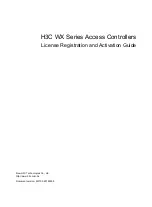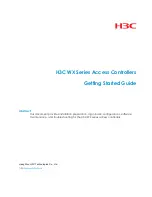
5-361
Command parameter
5Functions set with parameters
Continue func-
tion
CTN
Integer 1
For only the program execution slot 1, the state when the power is
turned OFF is held, and the operation can be continued from the saved
state when the power is turned ON next. The saved data is the program
execution environment (override, execution step line, program vari-
ables, etc.), and the output signal state. When this function is valid, if
the robot is operated when the power is turned OFF, the robot will start
in the standby state when the power is turned ON next. To continue
operation, turn the servo power ON, and input start. (Function invalid/
Valid=0/1)
<Precautions>
(1)As for robots with axes without brakes, the arm may lower due to
gravitational weight or rotate itself when the power is turned off. Thus,
extra care is necessary when using this function.
(2)Program that can continue using the Continuity function is the one
loaded in task slot 1. Programs in task slot 2 or subsequent slots will
not continue but will restart in program reset state.
(3)The following parameters cannot be changed after this function is
enabled. Be sure to change them, if necessary, prior to enabling this
function.
SLTn, SLOTON, TASKMAX.
(4)If parameters in the slot table (SLT*) are changed after enabling this
function, the changes are not reflected in the slot table. Disable the
continue function once, turn the power supply off and then on, and then
change parameters in the slot table.
0(Invalid)
JRC command
(Multiple rota-
tion function of
axes)
Set the execution status of the JRC instruction.
JRCEXE
Integer 1
Set the validity of the JRC command execution.
Execution valid/invalid = (1/0)
0(Execution
invalid)
JRCQTT
Real value 8
JSet the change amount to increment or decrement with the JRC com-
mand in the order of J1, J2, J3 to J8 axes from the head element.
The setting is valid only for the user-defined axis, so the J7 and J8 axes
will be valid for the robot's additional axis, and a random axis for the
mechanism's additional axis.
The unit relies on the parameter AXUNT.
JRC execution
valid robot
0,0,0,0,0,360,0,
0 or
0,0,0,360,0,0,0,
0
JRC execution
invalid robot
0,0,0,0,0,0,0,0
JRCORG
Real value 8
Set the origin coordinate value for executing the JRC O command and
setting the origin.
This setting is valid only for the user-defined axis.
The unit relies on the parameter AXUNT.
0,0,0,0,0,0,0,0
Setting of addi-
tional axis
AXUNT
Integer 16
Set the unit system for the additional axis.
Angle(degree)/Length(mm) = 0/1
0,0,0,0,0,0,0,0,
0,0,0,0,0,0,0,0
User error set-
ting
UER1
to UER20
Integer 1,
Character
string 3
Sets the message, cause, and method of recovery for errors from the
Error instruction. Maximum of 20 user errors can be set.
First element ... error number to set (9000 to 9299 is the available
range). The default value 9900 is not available. Change the value
before proceeding.
Second element ... Error message
Third element ... Cause
Fourth element ... Method of recovery
If a space character is included in the message, enclose the entire
message in double quotation marks ("").
Example)9000,"Time Out","No Signal","Check Button"
9900,"mes-
sage","cause","t
reat"
Unit setting for
the rotational
element of posi-
tion data
PRGMDEG
Integer 1
Specifies the unit used for describing the rotational element of position
data in the robot program.
0:Rad
1:Deg
Example)M1=P1.A (Unit for this case is specified.)
(Default unit for referencing data components is radian.)
The default rotational element for the position constant (P1=(100, 0,
300, 0, 180, 0, 180) (7, 0)) is Deg. This parameter is irrelevant.
0(Rad)
Parameter
Parameter
name
No. of arrays
No. of characters
Details explanation
Factory setting
















































